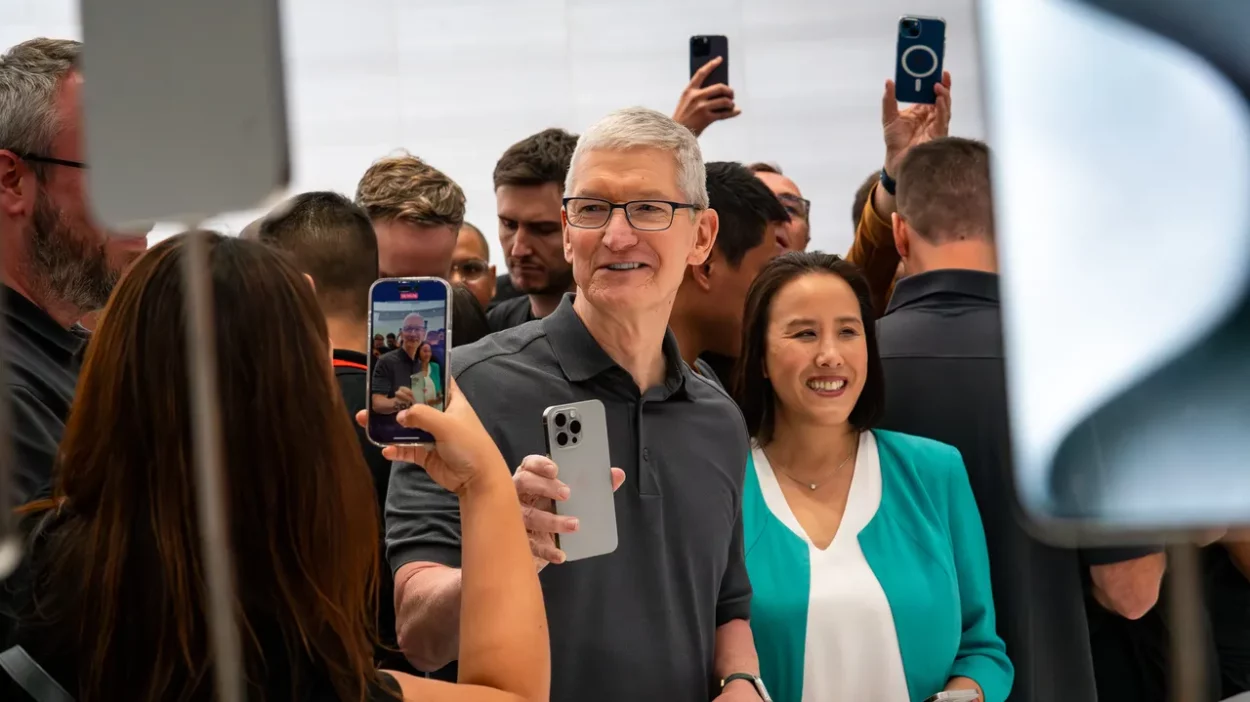NEW YORK: Apple’s true speciality isn’t consumer technology. It’s marketing. Few other enterprises in human history have managed to efficiently separate people from their money at such scale.
So when this marketing juggernaut turns its prowess to selling its own green credentials, you should expect nothing less than, say, Oscar winner Octavia Spencer playing Mother Nature in a slick viral video. But the credibility of Apple’s environmental claims is a little fuzzier than the razzle-dazzle would have you believe.
The tech giant is a leader in setting high environmental standards, but it continues to rely on overhyped offsets to meet its goals, says Bloomberg Opinion columnist Mark Gongloff.
Tuesday’s (Sep 12) Apple Event, the company’s annual celebration of mass consumerism, featured not only Spencer’s Mother Nature but a barrage of promises about all the ways Apple is looking out for her:
- A new watch lineup Apple calls its first “carbon neutral” product, a label Apple vows will apply to all its products by 2030
- No more leather in watch bands or accessories
- No more plastic in packaging by 2025
- Shipping more products by sea rather than by air
- Using more recycled materials
- Using renewable energy for some watch manufacturing, along with corporate offices, data centres and retail stores
- A vow to cut carbon emissions by 75 per cent from 2015 levels by 2030
- A promise to use only “high quality” carbon credits to make up for whatever emissions Apple can’t eliminate
- A new tool in the Home app called “Grid Forecast” that alerts users when green power is available
These days, corporate “wokeism” attracts conservative backlash faster than sound draws the monsters in A Quiet Place. Apple deserves kudos for making as much noise about its social values as possible. In this, at least, the company is on the right side of history, setting a good example for its peers.
MURKY PROMISES
Apple also knows its target audience, of course; its user base leans young, female and fairly well-to-do. But if capitalism has any hope of helping solve the climate-change problem it created, then this is basically how it should work: The invisible hand of the market guiding companies and customers toward more sustainable behavior.
Some of Apple’s choices will also do clear and measurable good. Ditching leather, for example, is big: Cattle ranching is responsible for 14.5 per cent of the planet’s emissions, by one estimate.
Committing to renewable energy and setting aggressive targets for emissions reduction are important. Grid Forecast could nudge electricity use in a positive direction. And the sheer volume of recycled materials in Apple’s iPhones and other products is genuinely impressive.
After that, the promises get murkier. For example, it isn’t entirely clear paper packaging is superior to plastic, as my Bloomberg Opinion colleagues Adam Minter and David Fickling have written. Though most of the fibres in Apple’s “fibre-based” packaging are recycled, the rest come from precious carbon-storing trees. Ocean shipping does emit far less carbon than air transport, but it also spews pollution directly into the oceans.
More importantly, Apple’s emissions goals depend heavily on carbon offsets, which are credits companies and people get for investing in projects to reduce carbon – often, by planting trees.
Carbon offsets have been under intense scrutiny lately for promising more than they can deliver. Too many give credit for measures that would happen anyway, such as not chopping down trees, for example.
Without a central authority to assure quality control for offsets, they will always be suspect. Rainforest offsets certified by Verra, one of the private standard-setters Apple uses, have been accused of being mostly “worthless.”





Leave a Comment